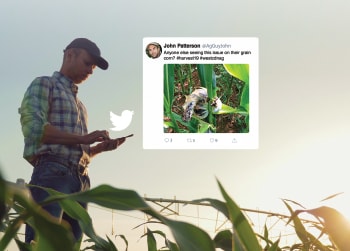A lot has changed since 1995, but Canadian ag retailers continue to drive innovation in their own businesses and with their customers. Celebrate all your association has achieved over the past 25 years with friends and colleagues at the 2020 CAAR Conference! We’ll see you in Saskatoon from Feb. 11–13!
 No comments
No commentsFocusing on strategic objectives drove the association forward in 2019.
By all accounts, 2019 was a trying year for Canadian agriculture. Between trade barriers, extreme weather and drought, and a seemingly endless harvest, no one along the value chain was immune from adversity. Though it was difficult to see the industry struggle, Mitch Rezansoff, CAAR’s executive director, says that the industry’s collective strength was also on display.
A look at CAAR’s plans and priorities for 2020.
CAAR’s staff, board of directors and committee groups are putting in the work to ensure the association is well-equipped at all levels to provide valuable services and dependable support to its members in the next year, and throughout the new decade.
1995 AN ASSOCIATION IS BORN:
The Western Fertilizer and Chemical Dealers Association (WFCDA) unanimously votes to dissolve the organization and transfer its funds to a new national association. With that, the Canadian Association of Agri-Retailers, headquartered in Winnipeg, Man., is born. Randy Wogelmuth is elected president of the CAAR board of directors; Jacqueline Ryrie is the association’s first executive director.
Digital connectedness is changing the agronomic conversation.
Prairie Certified Crop Adviser (PCCA) Board chair Kelly Boles says Canadian farmers are increasingly turning to Twitter with queries on many different aspects of crop production, from insect identification to grain drying.
Closing the loop on nutrient use is becoming a common conversation in the fertilizer sector.
To help meet the future food demands of a growing population, the fertilizer industry is starting to look more seriously at closing the loop on nutrient use.
SPONSORED BY FERTILIZER CANADA: Fertilizer is one of nature’s most complex and beneficial resources, as it allows soil to become more productive and yield better crops. Without it, we simply couldn’t produce enough corn, wheat, rice, or other crops needed to feed the world’s population. Faced with a growing global population, less arable land, and environmentally-conscious consumers, farmers are looking for ways to grow more crops on the same land while protecting the environment. It’s a tall order to be sure, but farmers are up to the challenge.
SPONSORED BY FERTILIZER CANADA: Over the years, Fertilizer Canada has developed world-class safety and security programs through eLearning and Codes of Practice to complement the safety initiatives of our members. Safety is the number one priority of the fertilizer industry. Our members work to ensure that every day their employees and facilities meet stringent requirements for a safe workplace as they work to make products which help feed the world. This commitment is upheld beyond the boundaries of their sites as they work with first responders to ensure the safety of their communities and educate their customers on proper use of the product.
CAAR has helped members weather regulatory changes for 25 years.
When the members of the Western Fertilizer and Chemical Dealers Association (WFCDA) voted to form a national organization, they sought to achieve more clout with regulators. The new organization would be better positioned to help ensure decision makers considered the agri-retailer perspective when creating policy that would affect their businesses. No issue illustrates this better than the ongoing work CAAR has done on behalf of its members regarding anhydrous ammonia (NH3) regulations.
CAAR has completed year one of its long-term strategic plan, developed in fall 2018 to guide the association’s focus and direction. As we prepare to embark on the next phase of our long-term strategy, we also enter a new decade of supporting agri-retailers influencing world class food production.
Of all the stories we get to tell in this magazine, some of my favourites are those that appear in our sustainability department. These articles tend to deal with topics that take place at the intersection of advancements in technology and appreciation of a precious resource.
 How to resolve AdBlock issue?
How to resolve AdBlock issue? 










